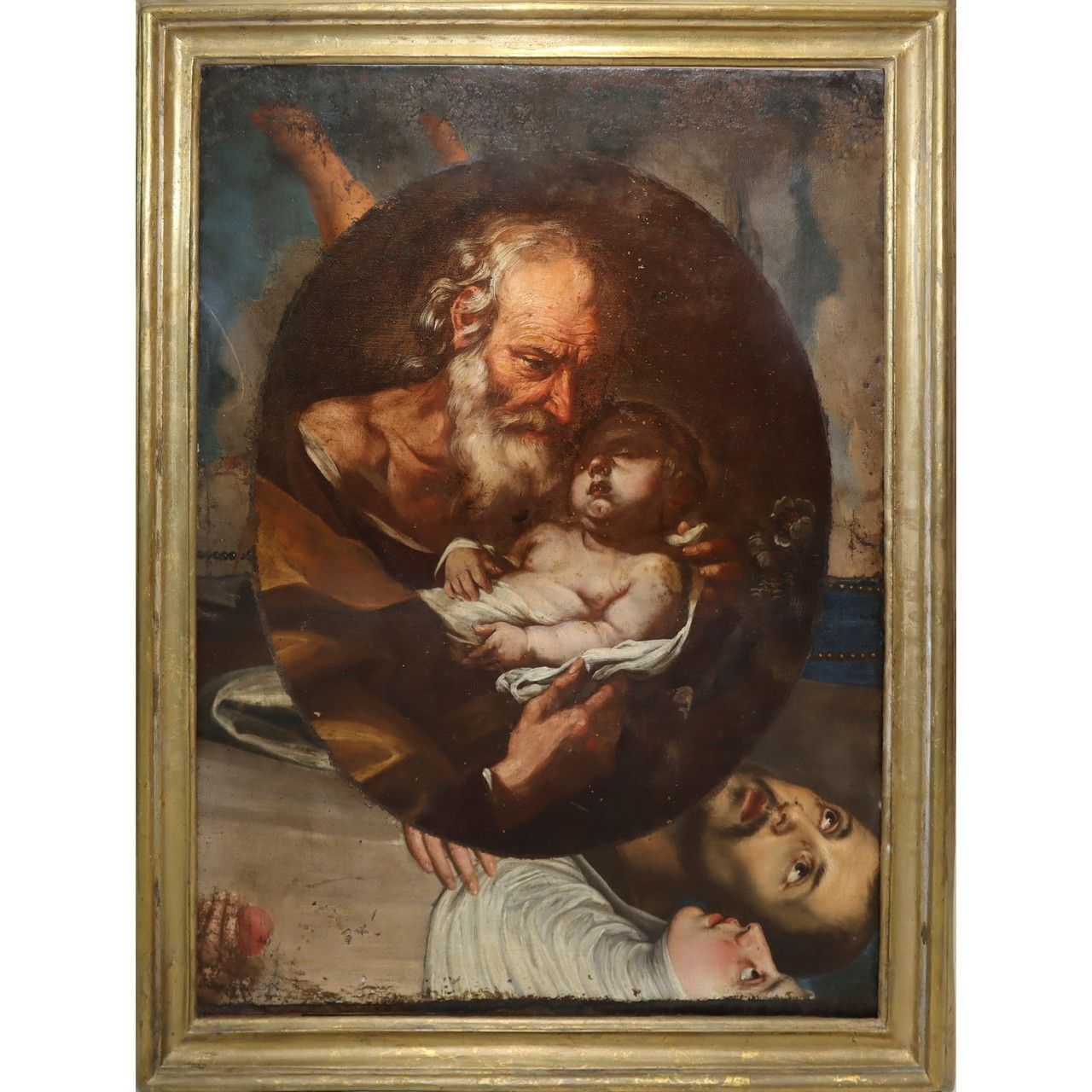Description
St. Joseph with Child, 17th century painter H cm 100 x 73, in frame cm 116 x 88 Oil on canvas. Work obtained by cleaning du two overlapping paintings. Comparisons can be made with canvases by Ercole de Maria also known as Ercolino di Guido or Ercolino di Bologna from the Archbishop's Palace in Milan and Houston published by Pepper. Expertise of Professor Claudio Strinati: "The painting depicting Saint Joseph with Child (oil on canvas, cm. 71 x 103) falls very well within that tradition derived largely from Guido Reni, which saw numerous painters active during the seventeenth century, both direct pupils of Reni and simple followers. The theme of Saint Joseph with Child was highly appreciated at the time, especially in the Bolognese school, and constituted a beautiful example of the artistic consecration of fatherhood in a historical period in which the theme of the Madonna and Child, which has its origins in the Middle Ages, had instead remained almost exclusive. The painting under consideration here reflects well the Reni iconography and is to be attributed to a very close follower of the great Emilian master, Ercole de Maria, remembered by ancient sources (first and foremost Carlo Cesare Malvasia, the greatest biographer of Bolognese painters) as a faithful follower of Reni and a painter endowed with singular virtues (also as a copyist) that made him highly esteemed in his time. The little information we have about him is summarized in Marina Cellini's excellent modern biography published in La scuola di Guido Reni, edited by M. Pirondini and E. Negro, Artioli Modena 1992, p. 203 ff. On the basis of the indications provided by the scholar, I believe I can refer our painting with certainty to Ercole de Maria, a countryman but much younger than Reni, fixing its dating to just before the middle of the seventeenth century, although the artist's dates of birth and death are unknown. The work is conducted in de Maria's typical style of lumpy, dense brushwork with a broad, nobly expressive stroke. The work appears to be in excellent state of preservation."
30
St. Joseph with Child, 17th century painter H cm 100 x 73, in frame cm 116 x 88 Oil on canvas. Work obtained by cleaning du two overlapping paintings. Comparisons can be made with canvases by Ercole de Maria also known as Ercolino di Guido or Ercolino di Bologna from the Archbishop's Palace in Milan and Houston published by Pepper. Expertise of Professor Claudio Strinati: "The painting depicting Saint Joseph with Child (oil on canvas, cm. 71 x 103) falls very well within that tradition derived largely from Guido Reni, which saw numerous painters active during the seventeenth century, both direct pupils of Reni and simple followers. The theme of Saint Joseph with Child was highly appreciated at the time, especially in the Bolognese school, and constituted a beautiful example of the artistic consecration of fatherhood in a historical period in which the theme of the Madonna and Child, which has its origins in the Middle Ages, had instead remained almost exclusive. The painting under consideration here reflects well the Reni iconography and is to be attributed to a very close follower of the great Emilian master, Ercole de Maria, remembered by ancient sources (first and foremost Carlo Cesare Malvasia, the greatest biographer of Bolognese painters) as a faithful follower of Reni and a painter endowed with singular virtues (also as a copyist) that made him highly esteemed in his time. The little information we have about him is summarized in Marina Cellini's excellent modern biography published in La scuola di Guido Reni, edited by M. Pirondini and E. Negro, Artioli Modena 1992, p. 203 ff. On the basis of the indications provided by the scholar, I believe I can refer our painting with certainty to Ercole de Maria, a countryman but much younger than Reni, fixing its dating to just before the middle of the seventeenth century, although the artist's dates of birth and death are unknown. The work is conducted in de Maria's typical style of lumpy, dense brushwork with a broad, nobly expressive stroke. The work appears to be in excellent state of preservation."
